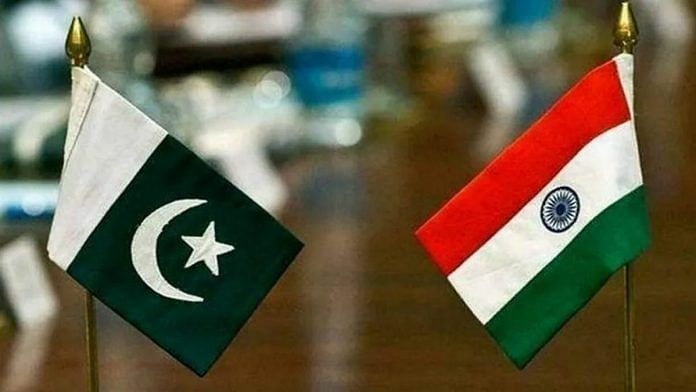
Thank you dear subscribers, we are overwhelmed with your response.
Your Turn is a unique section from ThePrint featuring points of view from its subscribers. If you are a subscriber, have a point of view, please send it to us. If not, do subscribe here: https://theprint.in/
Should India and Pakistan play cricket more often?
The ongoing Asia cup tournament has produced two hugely entertaining games of cricket between India and Pakistan. Given that these two nations have not played each other outside of ICC sanctioned tournaments for over a decade, cricket fans have been starved of the experience for a while now. Thus, it was no surprise that the two games this week produced a yearning for the two nations playing each other more often, including in bilateral series. This would certainly be a bonanza from a business perspective, in that the sky-high ratings desired by administrators and broadcasters alike would basically be guaranteed. In this article, I will delve into the tricky subject of whether politics and sports ought to be mixed since that is the crux of the question in this storied sporting rivalry. There are arguments to be made on both sides.
A sporting boycott is generally just one aspect of a more widespread set of sanctions imposed by the government(s) on one side on the other. These sanctions usually involve a halt in business activities across the board affecting livelihoods in many walks of life and can sometimes be accompanied by a diplomatic break in ties as well. Ultimately cricketers are professionals in their chosen area, and one could make an argument that they should be subject to the same rules that apply to professionals in other fields affected by the government sanctions. Whichever side of the argument one is on, it ought to be obvious that sanctions (including sporting ones) are preferable to conflict as ways to protest to the other side. If non-violent sporting boycotts are not an option in civil society, then one might wonder what alternate form of protest would be acceptable at all assuming one accepts that one side has a legitimate grievance against the other.
The notion of “legitimate grievance” is of course a subjective one and history is full of examples where sanctions and sporting boycotts have been used. However, there is no denying the fact that many average Indians have supported the decisions taken by their government in this regard as a means of expressing a sense of solidarity with those on the front lines affected by the conflicts with Pakistan. To that extent, duly elected Indian governments (across the political spectrum) were largely expressing the will of the people, though it is by no mean a universal view. In fact, arguments have been made to allow people-to-people contact in cultural fields, with many prominent personalities speaking out against the Indian government’s policy. Apart from the fact that these folks obviously have a right to express their viewpoint, they probably also have a point that the arts are an excellent way to build bridges between the people of the two nations. This may be the main reason for why one ought to make an exception for these select fields (like the arts) that have that potential to decrease tensions and bring people together. There also isn’t any conclusive data that suggests that sporting boycotts work on their own in achieving any long-term objectives. They are useful mostly as a short-term reaction, tit-for-tat, or as a bargaining chip to start the process of rapprochement but it is unclear if any of these apply in the case of India-Pakistan cricketing ties. It is also far from obvious if cricket does anything to reduce tensions between the Indian and Pakistani people at large. While a cricket match can provide heartwarming moments of bonhomie between the players (who serve as role models) on both sides, it can also serve to bring out jingoistic elements in both countries that often get amplified by traditional and social media invariably causing more divisions.
Having tried to bring out both sides of this complex debate, let me end with a positive proposal that could be considered by cricket administrators on both sides since it would make financial sense without running afoul of politics. Similar to how the British Lions bring together rugby players from different nations to play as one team, I would like to see a combined cricket team from India and Pakistan play from time to time. The great thing about the British Lions concept is that all the nations involved: England, Ireland, Scotland, and Wales do play on their own most of the time and this means that their fans are more accepting of the notion of a combined British team since it does not run counter to their desire for a national team. A combined India-Pakistan team playing a 5-test series in Australia or England once every four years may well be the best tool to bring the people in both nations together and is one that I can continue to dream of watching as a cricket fan.
Also read: SubscriberWrites: Boarding schools can be foundation for teaching life skills and values
These pieces are being published as they have been received – they have not been edited/fact-checked by ThePrint.

COMMENTS